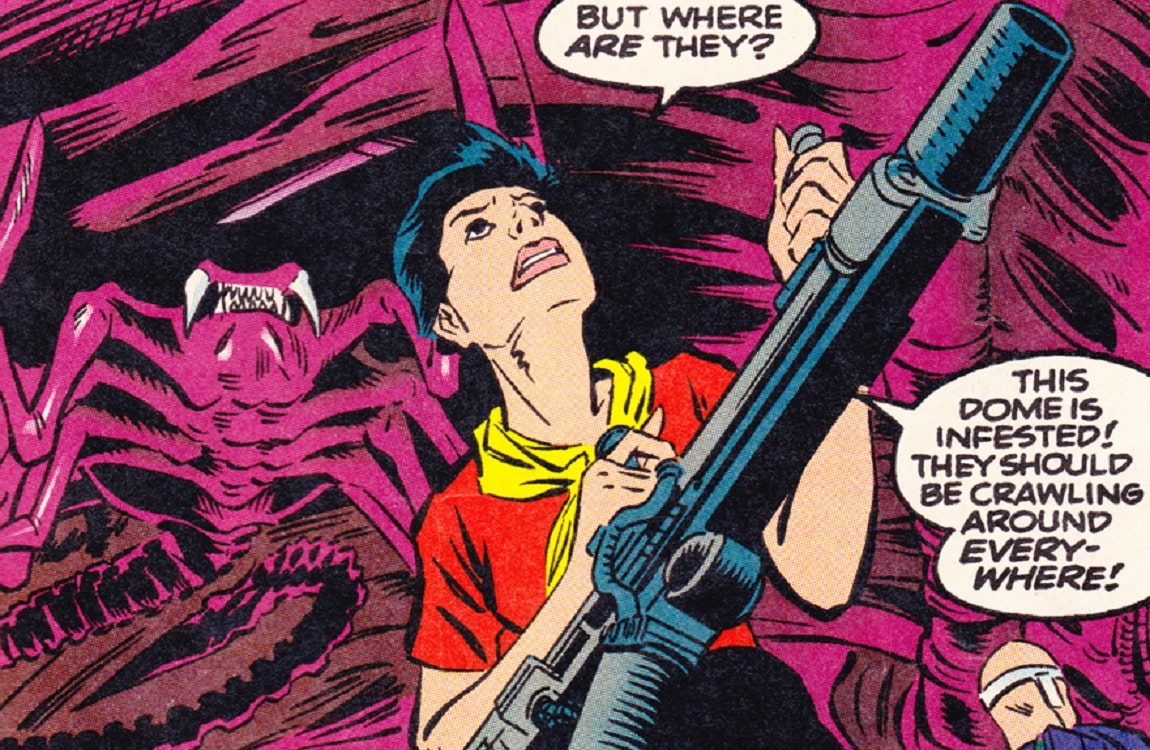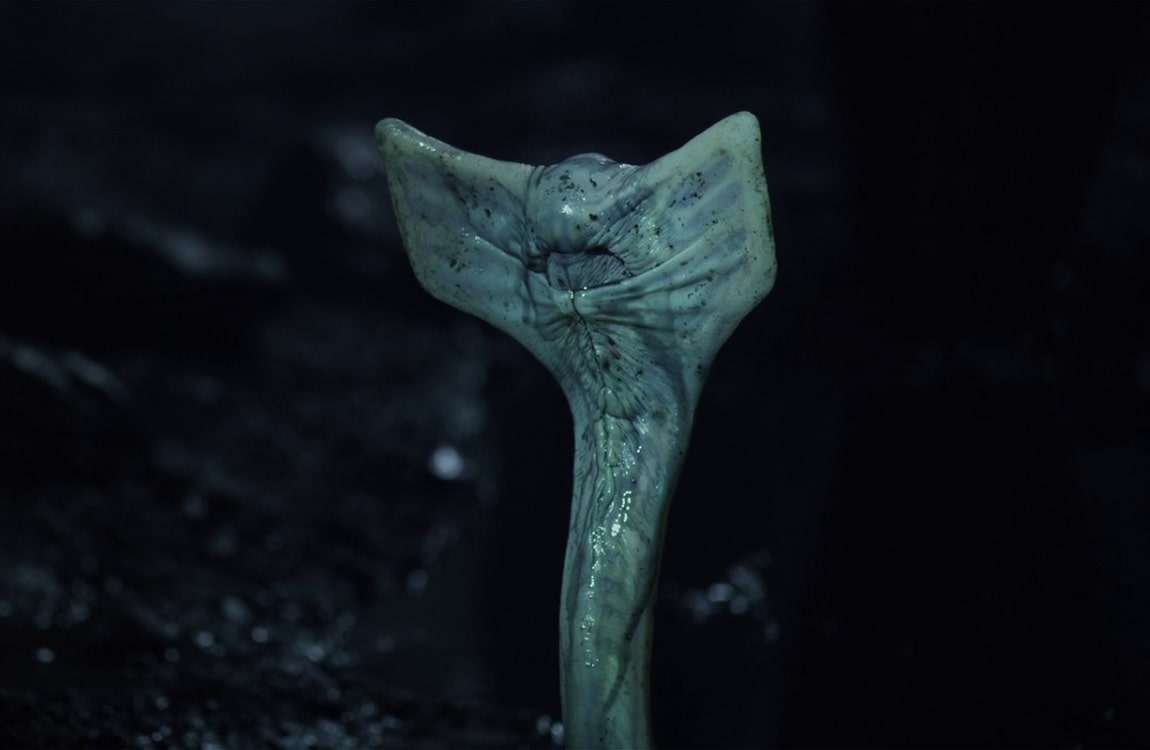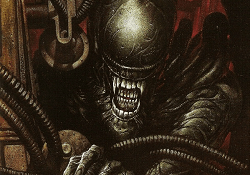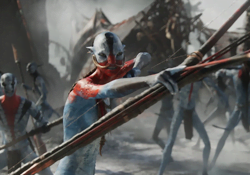Facehugger: Anatomy And Types Of The Second Stage Alien
The Facehugger is a terrifying second stage in the Xenomorph's life cycle, emerging from the Alien egg (ovomorph). Like regular Xenomorphs, the facehuggers come in different shapes and sizes. They all have the purpose of infecting a host with an embryo, which can depend on the type of the facehugger. A Facehugger could theoretically even impregnate another type of Xenomorph, if the need arises. Although the creatures are the beginning of the Alien life cycle, they can also serve as an attacking force, as they can be even more expandable as regular warriors. Here is an overview of the Facehugger, including its anatomy, abilities, and the list of variants, which contain the Queen facehugger, giant facehugger, and the white hybrid facehuggers.
Regular Facehugger

The regular facehugger is the most common facehugger type and appears in almost all entries of the franchise, including movies, comics, and games. It emerges from an egg (also known as an Ovomorph), either by leaping rapidly or crawling slowly, attaches itself to the face of the host, and wraps the tail around the throat. In the expanded universe, the facehuggers have sometimes attacked en masse, with hundreds of them attacking at once. This is a good tactic in the case of an Alien hive having not many Xenomorph warriors, but lots of eggs. Although the Xenomorphs are well known to go to great lengths to protect their young, they seem to cover mostly eggs and chestbursters, not facehuggers.

Facehugger Anatomy

The Facehugger possesses a uniquely terrifying Xenomorph anatomy designed for its role as a parasitic incubator. Resembling a nightmarish blend of spider and octopus, it has a pale leathery body with a long, flexible tail that it uses to grip and strangle its victims. Its underbelly features a complex orifice surrounded by a set of bony, finger-like appendages. These appendages tightly clasp the victim's head, while the central orifice forcibly attaches to the mouth, ensuring an airtight seal. This configuration allows the facehugger to implant an embryo into the host's esophagus. The creature's resilience is further augmented by its tough, acid-resistant outer skin, and naturally has acid for blood.
Facehugger Abilities

The facehugger exhibits a range of horrifying abilities complementing its parasitic lifecycle. Primarily, it displays an uncanny ability to detect and ambush potential hosts, often lying dormant until it senses nearby movement. Once a host is within reach, it springs forth with alarming speed and precision. The facehugger's tail, beyond providing a grip, can also constrict or adjust its length, allowing it to leap significant distances or maneuver around obstacles. After attachment, it possesses a remarkable capacity to regulate the host's biological functions, through the use of tubes and sacks inside of its body. This includes inducing a coma-like state, ensuring the host remains immobile and non-resistant during the implantation process. Additionally, its own life support system is incredibly efficient, allowing it to survive in hostile environments and maintain its grip for extended periods without needing sustenance. Upon successful implantation, the facehugger detaches and dies, having fulfilled its singular, terrifying purpose.

Facehugger Removal

The Facehuggers are notoriously difficult to remove, but there have still been a few cases of successful Facehugger removal in Alien lore. The best option is to remove the facehugger while it is still in the process of attempting the secure itself on the victim's head. This happened with Ripley in Aliens, where Gorman, Hicks, and Vasquez successfully removed the facehugger together, while its tail was already latched around Ripley's throat. When the facehugger is already on the victim's face, there is still a small chance to remove it by cutting it or ripping it off by brute force, depending on the facehugger type. The proto-facehuggers from Alien: Covenant implant the embryo in just a few seconds, while the regular type might still take a few minutes. Being too late, one would then have to deal with Chestburster removal, which is much more difficult.
Royal Facehugger

The royal facehugger is slightly bigger than the regular one and carries the Alien Queen embryo. In addition, there is some evidence that it carries a warrior Alien embryo, serving as a protector for the slowly growing Queen. The creature has webbing around its legs, possibly making it a more adept swimmer. The royal facehugger only appeared in the Alien 3: Special Edition and was discovered dead by prisoner Murphy in the abattoir. Carrying multiple embryos would explain the plot hole of Alien 3 only having one egg and one facehugger, but both the runner Alien and the Queen that grew inside Ripley.
Protomorph Facehugger

The Protomorph facehugger eggs from Alien: Covenant were created by David based on the original designs of the Engineers. While the eggs looked different from the traditional eggs (having 2 petals instead of 4), the facehugger's appearance was mostly the same. However, they had an accelerated life cycle, being able to inject an embryo in a matter of seconds, as it happened with Sergeant Dan Lopé from the USCSS Covenant. The Protomorph facehugger was very agile, but perhaps a bit more vulnerable, as it came off after being stabbed with a knife. Furthermore, the resulting Protomorph emerged relatively fast, both in the case of Captain Oram and Dan Lopé.
Romulus Facehugger

Alien Romulus introduces yet another new Facehugger type. These Facehuggers were possibly experimented on by the Black Goo Pathogen by the scientists on the Romulus part of the Renaissance Station, creating a new Xenomorph strain. Breaking containment from the research labs, these Facehuggers attacked in masse, overwhelming any opponents in quick succession. The Romulus Facehuggers were dark brown in color, similar to the Queen Facehugger seen in Alien 3. The proboscis tube that they stuck in the throat of their victims is especially thick, visible in a scene of a Facehugger removal. The Romulus Facehuggers had human-like nails on the tips of their fingers, giving them an especially creepy appearance.
Giant Facehugger

The giant facehugger was a toy released by Kenner as part of their Aliens product line, representing one of the biggest Xenomorphs in the lore. Accompanying the toy, was a mini-comic titled Aliens Space Marines: Terrordome. In the comic, most of the Colonial Marine squad had miraculously survived the movie and formed into a group of Alien hunters. Lead my Ripley, they traveled into an Alien hive, where giant facehuggers stalked on the ceiling. The giant facehuggers had red skin, fangs, and spikes on their legs. They didn't infect any hosts themselves, but rather incapacitated them and held down until a regular facehugger was ready to attach. NECA later released a reimagining of the creature, named the Queen facehugger.
White Hybrid Facehugger

The white hybrids and their facehuggers appeared in the exotic Aliens vs. Predator: Deadliest of the Species comic series and were the creation of a Toy, a rogue AI serving one of the big mega-corporations alongside Weyland-Yutani. These white facehuggers had spikes on their backs, a form of extra protection lacking on the other types. However, the facehuggers seemed somewhat docile in the few cases where they were seen, being mostly offered from a hand and being non-aggressive. The resulting Xenomorphs had a mixture of human, Predator, and Xenomorph traits, some of them even being able to speak. The white hybrids were wiped out by Ash Parnall and her Predator ally - Big Mama.
Giger's Original Facehugger

Like with the chestburster, Giger's original design for the facehugger was rather different from what we saw in the movie. The creature was much larger and longer, however, it did not cover the victim's face entirely. The phallic tongue that was shoved down the throat was also visible. A facehugger in this position would have been surely easier to remove, it did not even have its tail around the victim's throat. It is also worth mentioning that the victim in this picture does not seem entirely human, but more like an Engineer as seen years later in Prometheus.
Trilobite

The massive trilobite creature from the end of Prometheus wasn't a classical facehugger, but can be considered its ancestor or close relative. Dr. Elizabeth Shaw managed to extract the creature from her stomach with the auto-doc, after being infected by having sex with Dr. Holloway, who in turn was infected with the black goo. It can be said that the trilobite had a reverse lifecycle, being born in a similar way as a chestburster. However, it did carry an embryo, which it successfully inserted into an Engineer by not only hugging his face but covering his whole body. The result was the birth of the Deacon, another close relative of the Xenomorph.
Hammerpede

The hammerpede creature was another prototype facehugger from Prometheus. It had a smaller body with white skin and was able to stand on its muscular tail. The hammerpede probably formed when small worms carried by the feet of the Prometheus crew came into contact with the black goo, transforming them rapidly. The supposed scientist named Millburn found this space snake to be cute and tried to cuddle with it. However, it wrapped itself around his arm, slipped into his suit and forced itself down his throat. Like the regular facehugger, it had acid for blood, which was evident when Fifield tried to cut the creature but got a face full of acid, falling into the black goo himself. There is no evidence of the hammerpede carrying any embryo, as Millburn was just killed.
Facehugger Impregnating a Xenomorph

A facehugger impregnating a Xenomorph is possible but very rare and has happened at least once in the Alien expanded universe. No special type of facehugger is required for this, although it is an inefficient way to produce more Xenomorphs, as two eggs are required in the end. Facehuggers are not attracted to Xenomorphs, and could only be commanded to do the act by the Queen when a special need arises. One such need could be the requirement for a new Queen when the old one is sick or a new hive location is discovered but there are no hosts yet. The Samara Station Queen from Aliens vs. Predator: Deadliest of the Species was impregnated by a Facehugger. The Queen used the birth of the chestburster to kill the Hybrid King Alien, holding him against her chest while it punched through.
Conclusion
In conclusion, the facehugger, is the cornerstone of the Alien's lifecycle and one of the most memorable creatures from the franchise. With its specialized anatomy designed for effective and terrifying parasitism, the facehugger is adept at ensuring the continuation of its species by forcefully implanting embryos into hosts. Its various abilities, including ambush tactics, resilience in hostile environments, and the induction of a comatose state in its victims, underscore its efficiency as a reproductive tool of the Xenomorphs. Many types of the facehuggers exists, designed for different purposes.
Tag Categories: Xenomorph Appearance









